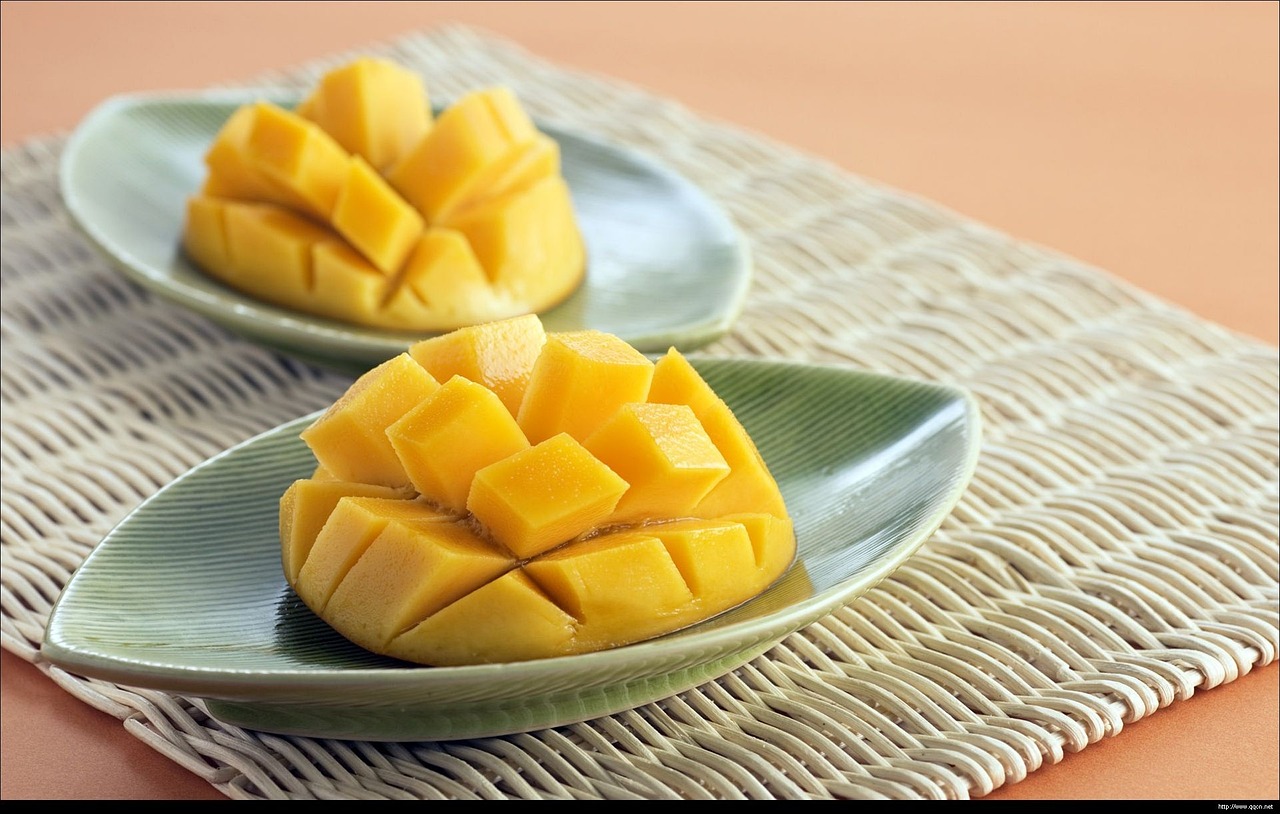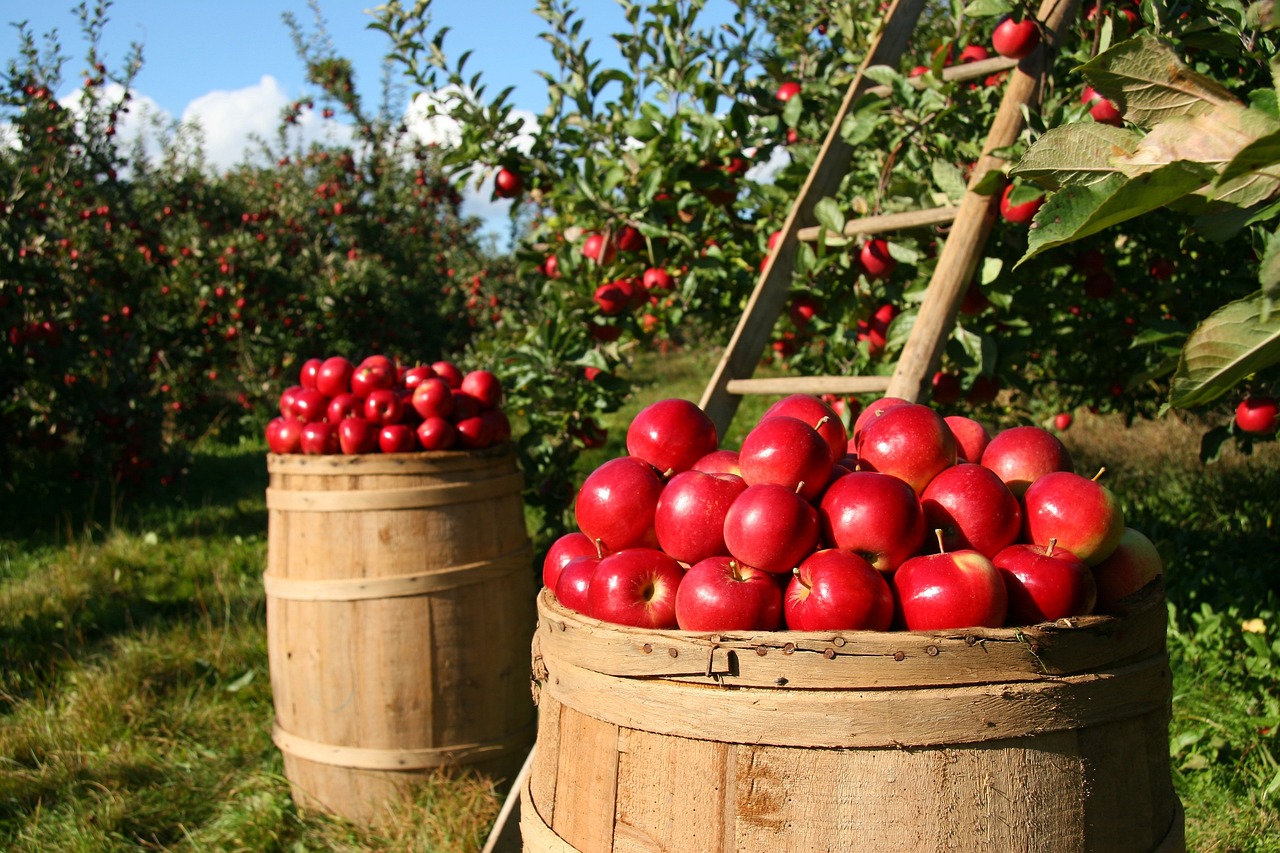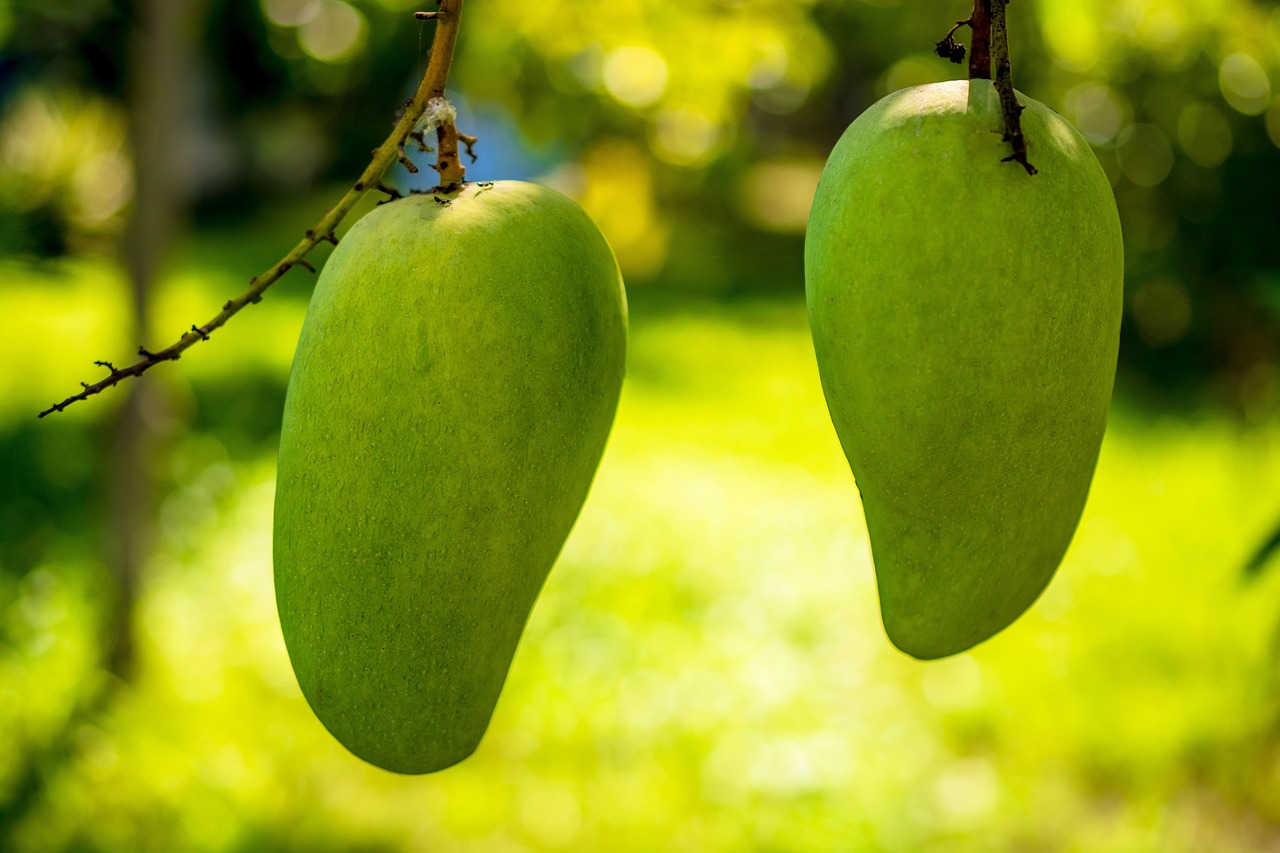Pruning mango orchards improves accessibility by removing excessive growth, allowing better air circulation and sunlight penetration. This practice also enables easier harvesting and maintenance, resulting in healthier trees and higher fruit quality.
Mango orchards are a vital part of agriculture in many tropical and subtropical regions. The mango tree, known for its delicious fruit, requires specific care to thrive. Pruning is an essential aspect of mango orchard management. It plays a critical role in shaping the trees, enhancing fruit production, and improving accessibility for both farmers and harvesters.

One of the main benefits of pruning mango trees is the increased accessibility it provides. As mango trees grow, they can become dense with foliage and branches. This density can hinder movement within the orchard, making it difficult for workers to reach the fruits during harvesting. Proper pruning techniques create a more open structure, ensuring that workers can navigate the orchard with ease.
In addition to improving accessibility, pruning contributes to the overall health of the trees. It helps in removing dead or diseased branches, which can harbor pests and diseases. By eliminating these potential threats, farmers can ensure that their mango trees remain healthy and productive. Furthermore, pruning encourages new growth, leading to a more robust fruit yield.
Understanding Pruning Techniques
There are various pruning techniques that can be employed in mango orchards. Understanding these methods is essential for effective tree management. Below are some common techniques used by mango farmers:

- Thinning: This involves removing excess branches to allow better light distribution and air circulation.
- Heading Back: This method shortens branches to promote bushier growth and encourage lateral branching.
- Cleaning: Removing dead or diseased wood helps prevent the spread of disease and promotes healthy growth.
- Training: This technique involves guiding young trees to grow in a desired shape to enhance accessibility and productivity.
Each of these techniques serves a specific purpose. By incorporating them into their orchard management practices, farmers can achieve optimal tree health and fruit production.
Benefits of Pruning Mango Orchards
The practice of pruning mango orchards offers numerous benefits beyond improved accessibility. Here are some key advantages:
| Benefit | Description |
|---|---|
| Enhanced Light Penetration | Pruning opens up the canopy, allowing sunlight to reach lower branches, which can improve fruit quality. |
| Better Air Circulation | Increased airflow reduces humidity levels, lowering the risk of fungal diseases. |
| Improved Fruit Quality | With better access to sunlight and nutrients, the quality of mangoes produced is often higher. |
| Easier Harvesting | Reduced density allows workers to harvest fruit more efficiently and safely. |
These benefits highlight the importance of regular pruning as part of orchard management. Farmers who prioritize pruning can expect healthier trees and better yields, ultimately leading to greater profitability.

Timing and Frequency of Pruning
When it comes to pruning mango orchards, timing and frequency are crucial factors that influence the effectiveness of the practice. Generally, the best time to prune mango trees is just after the harvest season. This timing allows for the removal of any dead or diseased wood while minimizing stress on the trees.
Pruning should be done annually or biannually, depending on the growth rate of the trees and the density of the canopy. Farmers should observe their trees closely to determine when additional pruning may be necessary. Regular maintenance not only keeps the trees healthy but also ensures that accessibility remains optimal throughout the growing season.
Tools for Effective Pruning
The right tools are essential for successful pruning. Using appropriate equipment can make the process easier and more efficient. Here are some commonly used tools for pruning mango orchards:

- Hand Pruners: Ideal for small branches and precise cuts.
- Loppers: Useful for cutting larger branches that are difficult to reach with hand pruners.
- Saws: Necessary for thicker branches that require more power to cut through.
- Safety Gear: Gloves, goggles, and sturdy footwear are essential for ensuring safety during pruning.
Using the right tools not only improves efficiency but also minimizes damage to the trees during the pruning process. Proper care during pruning practices leads to healthier mango orchards and better accessibility.
The practice of pruning mango orchards is an art that combines skill and knowledge. By understanding its benefits, techniques, and best practices, farmers can ensure their orchards thrive while maintaining easy access for harvesting and maintenance tasks.
Common Mistakes in Pruning Mango Orchards
Pruning mango orchards can significantly enhance accessibility and overall tree health. However, there are common mistakes that many farmers make during this process. Recognizing these pitfalls is essential for achieving the best results.
- Over-Pruning: Removing too many branches can stress the tree. It may lead to reduced fruit production and unhealthy growth.
- Improper Timing: Pruning at the wrong time can damage the tree. For example, pruning during the flowering stage can reduce fruit yield.
- Neglecting Safety: Failing to wear safety gear can lead to injuries. Always prioritize personal safety when using sharp tools.
- Poor Cutting Technique: Incorrect cuts can harm the tree. Always make clean cuts to prevent disease entry.
Avoiding these mistakes will help ensure that mango trees remain healthy and productive. Proper awareness of these issues equips farmers to make informed decisions during the pruning process.
Signs Your Mango Trees Need Pruning
Identifying the right time to prune mango trees is crucial for maintaining their health and accessibility. Here are some signs that indicate your mango trees may need pruning:
- Dense Canopy: If the foliage becomes too thick, it can restrict light and airflow, increasing the risk of disease.
- Dead or Diseased Branches: These should be removed immediately to prevent the spread of disease within the tree.
- Low-Hanging Branches: Branches that sag too low can obstruct pathways and hinder harvesting efforts.
- Pest Infestation: If pests are present, pruning affected areas can help manage their population.
By observing these signs, farmers can take proactive measures to maintain their mango orchards effectively. Regular inspections will help keep the trees in optimal condition.
Seasonal Considerations for Pruning
The timing of pruning significantly affects how well mango trees respond to the practice. Understanding seasonal considerations helps farmers make informed decisions:
- Post-Harvest Period: The best time to prune is right after harvesting. This allows for easy access to branches without the interference of fruit.
- Before Flowering: Pruning should ideally occur before flowering begins to encourage healthy fruit set.
- Avoid Rainy Seasons: Pruning during wet conditions can increase the risk of disease due to open cuts.
Farmers should plan their pruning schedule around these seasonal factors. This ensures that trees remain healthy and productive while also improving orchard accessibility.
The Role of Pruning in Pest Management
Pest management is a critical aspect of mango orchard maintenance. Pruning plays a significant role in controlling pest populations and promoting overall tree health. Here’s how:
- Removing Infested Wood: By cutting away branches infested with pests, farmers can reduce pest populations and prevent further spread.
- Improving Airflow: Enhanced air circulation helps reduce humidity levels, making it less favorable for pests that thrive in moist environments.
- Encouraging Beneficial Insects: A well-pruned orchard attracts beneficial insects that prey on harmful pests.
Effective pest management through pruning not only protects mango trees but also supports a sustainable growing environment. This ultimately leads to higher-quality fruit production.
Integrating Technology in Pruning Practices
Advancements in technology have introduced new tools and methods for managing mango orchards. Here are some ways technology can assist in pruning practices:
- Drones: Drones can be used for aerial assessments of tree health and canopy density. This helps farmers identify areas that require pruning.
- Sensors: Soil and moisture sensors provide data on tree health, helping farmers decide when and where to prune.
- Apps and Software: Farm management software can help in scheduling and tracking pruning tasks, ensuring that they are performed at optimal times.
Integrating these technologies into orchard management offers a modern approach to pruning. By utilizing data-driven solutions, farmers can enhance their decision-making processes.
Sustainable Practices in Pruning
Sustainability is becoming increasingly important in agriculture. Implementing sustainable practices in mango orchard pruning can lead to long-term benefits. Here are some sustainable pruning practices:
- Organic Methods: Avoid using chemical treatments on pruned areas. Instead, focus on organic pest management techniques.
- Mulching: Use pruned materials as mulch to enrich soil and retain moisture, benefiting overall tree health.
- Composting: Create compost from pruned branches and leaves to provide organic nutrients back into the soil.
By adopting sustainable practices, farmers not only promote the health of their mango trees but also contribute positively to the environment. Sustainable pruning practices ensure that orchards remain productive for generations to come.
Training Young Mango Trees
Training young mango trees is essential for establishing a strong structure that promotes accessibility and productivity. Proper training techniques help shape the tree’s growth from an early stage, ensuring that it develops a robust framework to support future fruit production.
When training young mango trees, consider the following practices:
- Choosing the Right Leader: Select a central leader branch to serve as the main trunk. This helps create a strong vertical structure.
- Encouraging Lateral Branches: Allow lateral branches to grow at an angle of about 45 degrees. This orientation facilitates better light penetration and air circulation.
- Regularly Removing Competing Shoots: Identify and prune any competing shoots that threaten the central leader. This ensures that the primary leader receives adequate resources.
- Using Support Structures: In some cases, using stakes or supports can help guide young trees in their initial growth phase.
By implementing these training techniques, farmers can cultivate mango trees that are easier to manage and harvest as they mature.
Understanding Tree Growth and Development
A comprehensive understanding of mango tree growth and development is crucial for effective pruning. Mango trees typically grow in a specific pattern, and being aware of their growth stages can inform better pruning practices.
Mango trees generally go through the following stages:
- Young Stage: In this stage, the tree focuses on establishing its root system and initial structure. Pruning should be minimal and focused on shaping.
- Mature Stage: During this phase, the tree reaches its full height and begins to produce fruit. Regular pruning is essential to maintain accessibility and health.
- Declining Stage: As trees age, they may become less productive. Pruning can rejuvenate older trees by removing unproductive branches and encouraging new growth.
Recognizing these stages allows farmers to tailor their pruning strategies to the specific needs of their trees. This approach maximizes both tree health and fruit quality.
The Importance of Soil Health
Soil health is a critical factor in the overall productivity of mango orchards. Healthy soil supports robust tree growth, which in turn affects how well trees respond to pruning.
Here are some key aspects of maintaining soil health in mango orchards:
- Nutrient Management: Regular soil testing can help determine nutrient needs. Applying organic fertilizers can enhance soil fertility without harming the environment.
- Soil Structure: Practices such as mulching and cover cropping improve soil structure, promoting better water retention and root development.
- Microbial Activity: Healthy soil contains beneficial microorganisms that aid in nutrient cycling. Practices like composting can enhance microbial activity.
Investing in soil health ultimately supports healthier mango trees, making them more resilient to stress from pruning and other management practices.
Pest and Disease Control Strategies
Pest and disease management is essential for maintaining healthy mango orchards. Effective pruning can contribute to a comprehensive pest control strategy by reducing potential habitats for pests and diseases.
Here are some strategies for managing pests and diseases in mango orchards:
- Regular Monitoring: Frequent inspections of trees can help identify early signs of pest infestations or diseases. Prompt action is crucial.
- Pruning for Airflow: As mentioned earlier, improving airflow through pruning helps reduce humidity levels that favor disease development.
- Using Biological Controls: Introduce natural predators that target harmful pests, minimizing the need for chemical interventions.
- Cultural Practices: Implement practices like crop rotation and intercropping to disrupt pest life cycles and reduce infestations.
A proactive approach to pest and disease management helps ensure that mango trees remain healthy, which complements the benefits gained from proper pruning techniques.
The Role of Water Management
Water management is another crucial element in the care of mango orchards. Adequate water supply promotes healthy growth and helps trees recover from pruning stress.
Consider the following water management practices for mango orchards:
- Irrigation Systems: Efficient irrigation systems, such as drip irrigation, deliver water directly to the root zone, minimizing waste.
- Water Conservation Techniques: Employ mulching and cover crops to retain soil moisture and reduce evaporation.
- Monitoring Soil Moisture: Use moisture sensors to determine when irrigation is necessary, ensuring trees receive optimal hydration without overwatering.
Proper water management not only supports tree health but also enhances the effectiveness of pruning practices. Well-hydrated trees are better equipped to handle stress from pruning activities.
Community Engagement and Knowledge Sharing
Engaging with the local farming community can provide valuable insights into effective pruning practices. Knowledge sharing among farmers fosters innovation and improvement in orchard management techniques.
- Participating in Workshops: Attend or organize workshops focused on mango orchard management and pruning techniques to learn from experts and peers.
- Creating Support Networks: Forming local farmer groups enables sharing experiences, challenges, and solutions related to orchard management.
- Utilizing Online Resources: Many agricultural organizations offer online courses and resources on best practices for mango pruning and management.
Community engagement enhances learning opportunities for farmers, leading to improved practices in mango orchard care, including effective pruning methods. This collaboration ultimately benefits the entire agricultural community.
Implementing Adaptive Management Practices
Adaptive management is an essential approach for maintaining mango orchards, especially in the context of pruning for improved accessibility. This strategy involves continuously monitoring and adjusting practices based on observed outcomes. By incorporating adaptive management, farmers can respond effectively to changing conditions in their orchards.
Key components of adaptive management in mango orchards include:
- Monitoring Tree Health: Regular assessments of tree health help identify issues early. This allows farmers to adjust their pruning strategies as needed.
- Documenting Practices: Keeping detailed records of pruning techniques, timings, and outcomes helps track what works best over time.
- Feedback Loops: Engaging with fellow farmers to discuss successes and challenges fosters a collaborative learning environment that drives improvement.
By adopting adaptive management practices, mango growers can enhance their ability to maintain healthy orchards while also improving accessibility for harvesting and maintenance tasks.
Innovations in Pruning Techniques
As agriculture continues to evolve, new innovations in pruning techniques emerge. These advancements can significantly benefit mango orchard management. Here are a few innovative approaches:
- Precision Pruning: Utilizing technology such as laser cutters or robotic pruners can enhance precision in cuts, reducing damage to the tree and promoting healthier growth.
- Smart Pruning Systems: Some modern orchards are employing smart systems that analyze tree data to determine the optimal time and method for pruning.
- Integrating Agroforestry: Combining mango trees with other crops or trees can create a more resilient ecosystem. This practice often requires tailored pruning techniques to accommodate diverse plant species.
Innovative pruning techniques not only improve tree health and accessibility but also contribute to the sustainability of mango production systems.
The Economic Impact of Pruning Practices
The economic implications of effective pruning practices in mango orchards are significant. Properly pruned trees can lead to higher yields, better fruit quality, and lower labor costs during harvesting. Here are some economic benefits associated with pruning:
- Increased Yield: Well-pruned trees often produce more fruit, directly contributing to higher revenue for farmers.
- Improved Labor Efficiency: Enhanced accessibility reduces the time and labor required for harvesting, allowing farmers to allocate resources more effectively.
- Higher Market Value: Fruits from healthy, well-maintained trees tend to attract better prices in the market due to their quality and appearance.
Understanding the economic impact of pruning practices encourages farmers to invest time and resources into developing effective orchard management strategies.
Environmental Considerations
Pruning mango orchards also presents environmental considerations that farmers should keep in mind. Sustainable practices promote biodiversity and protect natural resources. Some environmental benefits include:
- Soil Conservation: Proper pruning and associated practices contribute to healthier soil, which is essential for long-term agricultural productivity.
- Biodiversity Enhancement: Creating a diverse ecosystem through careful management encourages beneficial insects and wildlife, which are essential for pest control.
- Carbon Sequestration: Healthy mango trees contribute to carbon sequestration efforts, helping mitigate climate change impacts.
By considering the environmental impact of pruning practices, farmers can align their orchard management with broader ecological goals.
Final Thoughts
Pruning mango orchards for improved accessibility is a multifaceted practice that requires knowledge, skill, and adaptability. From understanding the growth stages of mango trees to utilizing innovative technologies, effective pruning can significantly enhance both tree health and fruit production.
The benefits of proper pruning extend beyond immediate accessibility; they encompass economic advantages, environmental sustainability, and overall orchard vitality. By engaging with the community, adopting sustainable practices, and integrating adaptive management strategies, farmers can cultivate thriving mango orchards that yield high-quality fruit while ensuring ease of access for maintenance and harvesting.
As the agricultural landscape continues to evolve, staying informed about advancements in pruning techniques and technologies will empower mango growers to make informed decisions. Ultimately, prioritizing effective pruning practices not only benefits individual farmers but also contributes to the resilience and sustainability of the entire mango industry.
